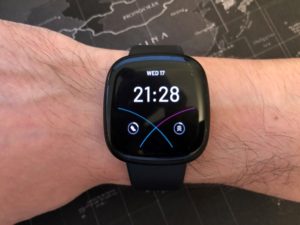Intro
Who doesn’t love being told to get up off their lazy backside and move about by a watch? Smartwatches and fitness trackers are becoming increasingly integrated into our lives. Whether it’s to just track your steps or to record those annual New Year’s resolution workouts, a fitness tracker is a great device to have.
Fitbit is a well-known name in the fitness tracker game with a few model lines under their belt, Charge, Sense and Versa to name a few. The latter named Versa is now in its 3rd iteration with the Fitbit Versa 3 released in August 2020, but at £199/$229 (at time of reviewing) is it any good? I have owned the Fitbit Versa 3 for about 2 months now and this review will take an in-depth look at its design and features.
Should You Buy It?
Pros
Good Battery Life
Great Sleep Tracking
Good Fitness Features
Cons
Limited Smart Features
No Local Storage
Tech Specs
- 1.58-inch AMOLED display
- 6+ days battery life & Fast Charging
- Built-in GPS + GLONASS
- SpO2 monitoring
- Optical heart rate sensor
- Water-resistant to 50 metres
- NFC with Fitbit Pay
- 40.48mm height x 40.48mm width x 12.35mm depth
- Alexa Integration
- iOS 12.2 or higher (iPhone 5s and iPad 5th gen or later)
- Android OS 7.0 or higher
- Bluetooth 5.0
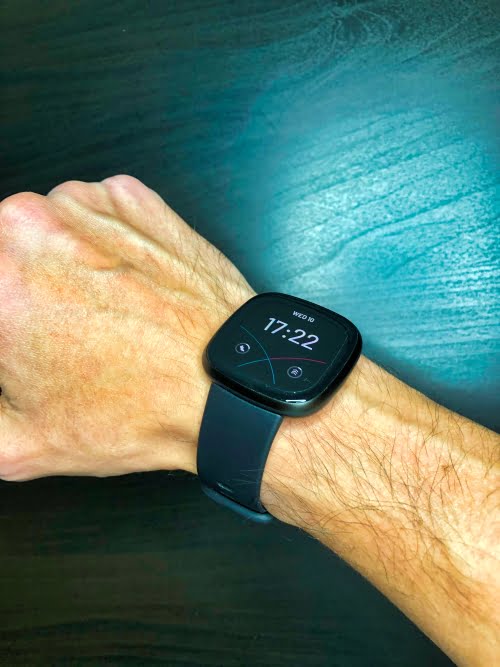
Unboxing
The unboxing experience is pretty good with a clean and minimal design. Fitbit has opted for this quirky opening method which displays that glorious 1.58-inch AMOLED display bang in the middle so you can’t help but stare at it. The ridiculously short charging cable is tucked away in a compartment, where it should probably stay to be honest. It’s short, stupidly short. You also get the 2 straps which vary in length as is customary with Fitbit products these days. The small band is recommended for wrist sizes between 140mm – 180mm (which I have on) or the large which is for between 180mm – 220mm. All in all, it’s a good unboxing experience, not quite Apple level, but it won’t leave you disappointed.

Design & Display
The first thing you notice is that 1.58-inch AMOLED display staring up at you. It’s mounted on a unique shape which is a cross between a square and a circle (make up your own names for this). It does look similar to its predecessors, the Versa and Versa 2 but with more roundness to those edges. There are still substantial bezels around the watch face itself which is a bit of a pain in this bezel-less world we live in today but by no means a deal-breaker. The key to minimising those bezels is to choose your watch face wisely, see my review of the 10 best free Versa 3 watch faces. Despite the bezels, the screen still packs a 336 x 336-pixel colour touchscreen, giving a crisper display than you get on the Versa 2. An always-on display feature means you can keep that glorious screen lit up even when you aren’t using it. It’s worth noting that this will impact battery life. The touchscreen is responsive and navigation between the screens is smooth.
If you have used an activity tracker before you will be familiar with the layout when swiping through the menus. For example, swipe right and you have a control panel where you can adjust brightness and set do not disturb. Although I haven’t found a way you can customise this, not sure if you can.
Afraid of scratching that lovely display? There are a number of third-party options available on Amazon to add that extra layer of protection. I went with the LK TPU Film Fitbit Versa 3 Screen Protectors. Here is a link to the product on AMAZON
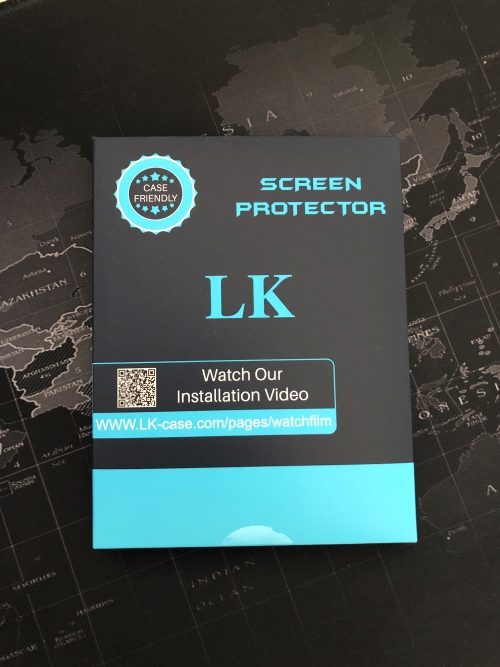
The biggest change to the Fitbit Versa 3 is the introduction of a new haptic button, replacing a physical button found on the Versa 2. This haptic button divides opinion. Fitbit claims it aids with water resistance so you no longer need to worry about bombing in the pool whilst wearing it (pool bombing is at your own risk). Personally, I don’t mind the haptic button, there is nothing worse than a rattling button on a device. It does take some getting used to though, I’m not going to lie. However, once you find that haptic sweet spot it’s plain sailing from there onwards.
Lastly, on the design, the quick-release buttons make it a doddle to change out your bands. The Fitbit infinity band is one of the comfier bands I have used but if you want to spice things up for your wild Saturday night in during lockdown Fitbit sell different coloured infinity bands as well as there been the usual huge selection on Amazon.
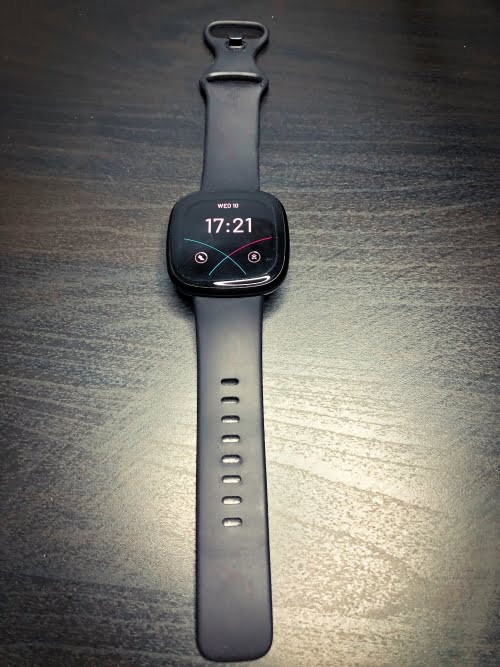
App
The Fitbit app is one of the more refined fitness apps on the market. I have used a few different ones in the past and the Fitbit one is definitely up there as one of the better ones in my opinion. The layout is clean and it is pretty intuitive, making it easy to find what you are looking for. You can even customise your dashboard, rearranging your little stat tiles in an order that suits you.
One feature I would like to see is the ability to customize the design of the app like a personal colour scheme or even just dark or light mode for example but maybe that is nit-picking.
Fitbit, like most companies these days, offers a paid membership which gives you extra features within the Fitbit app. The premium service will cost you £9.99/$9.99 a month, but what do you get for that near ten whole pounds?
You get access to;
- Guided video and audio workouts
- Advanced health and fitness insights. Mostly it is just an extended view of data that is already available, like a 30-day view of your breathing rate.
- Access to the Mindfulness features
- Selection of premium challenges
On the whole, it is entirely user preference on whether they opt for the premium service. You do get a 90-day free trial when you purchase your watch so if you are on the fence this may help you decide. For me, I won’t use the premium features as the base offering is more than adequate for what I want to do but have a nosey and see what works for you.
Activity Tracking
Activity tracking is what Fitbit is all about and it doesn’t disappoint on this. It provides you with your standard activity tracking features like how many steps you take a day, specific activity tracking like a run or gym workout and also monitors your heart rate. The Versa 3 also comes with GPS built-in so you can go for a run and track your exact route without needing to bring your phone along for the sweaty ride.
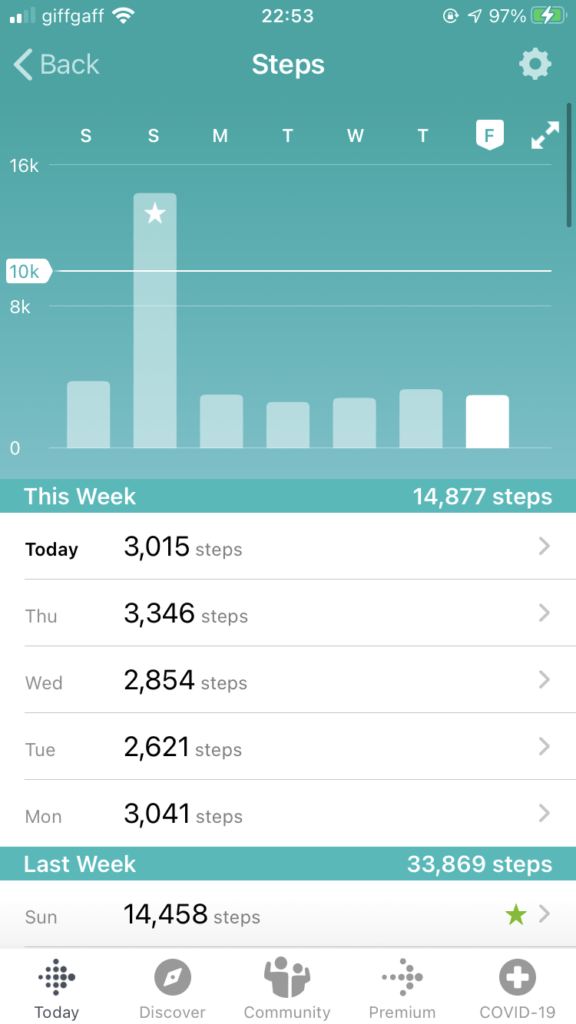
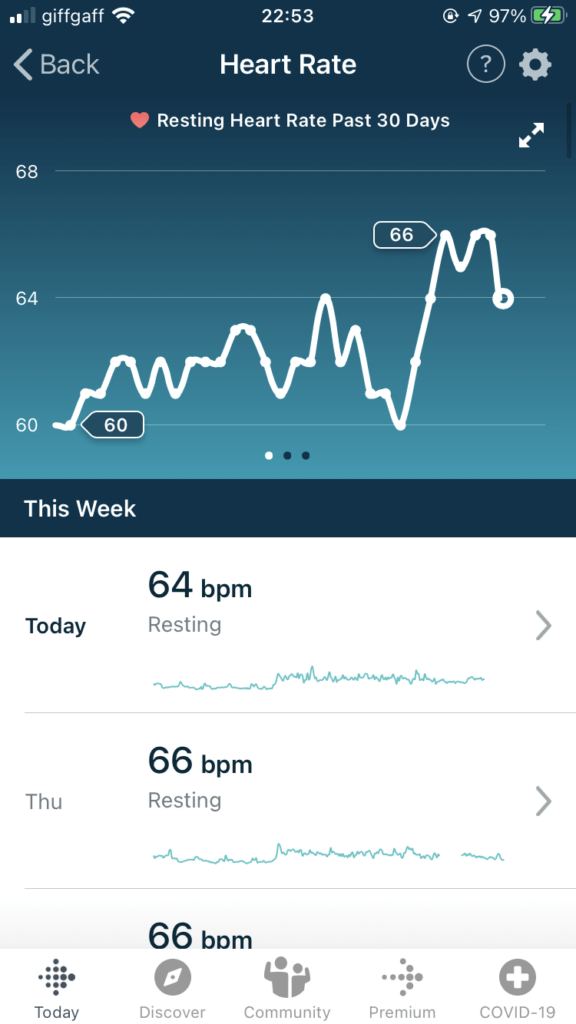
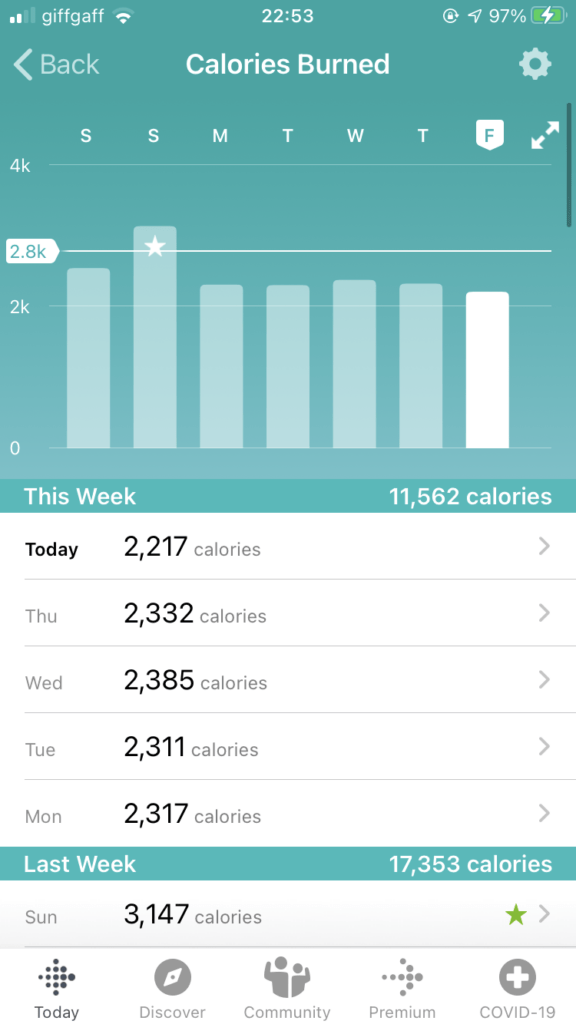
If you’re a hardcore exercise goer person then it might be worth checking out Fitbit’s top range device, the Sense. The Sense and Versa 3 are practically twins aesthetically but the Sense is the smarter sibling with some more advanced features under the hood. It has a fancy sensor to tell you when you are stressed and also has an ECG sensor to provide more in-depth heart analysis. If you want to bag yourself a Fitbit Sense you’re looking at around £299.99/$329 to get one. Check out our comparison review of the Sense and Versa 3 here.
The Today app on the Versa 3 is the best place to view a snapshot of your day without opening up the Fitbit app. You can see everything from your step count to your sleep time and score. You can also see more detail on some of these metrics by clicking on them but if you want the full detail you are best off heading into the app.
I decided to take the Versa 3 out for a spin by going on an outdoor jog in the delightful British weather. You get to choose from the following list of exercises; Bike, Bootcamp, Circuit Training, Elliptical, Golf, Hike, Interval Workout, Kickboxing, Martial Arts, Pilates, Run, Spinning, STair Climber, Swim, Tennis, Treadmill, Weights, Workout and Yoga. Now breathe!
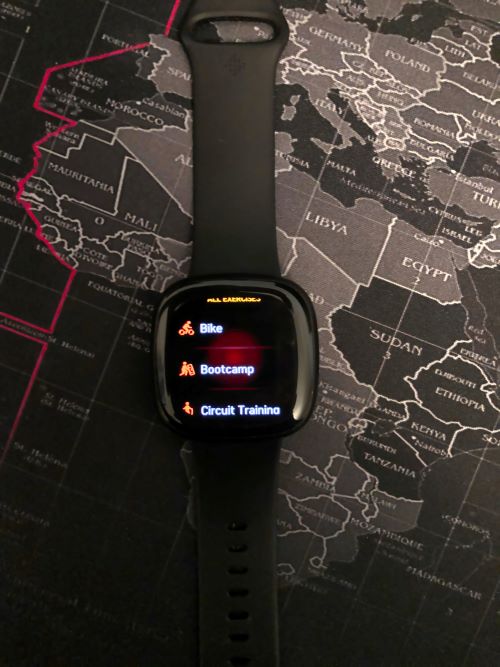
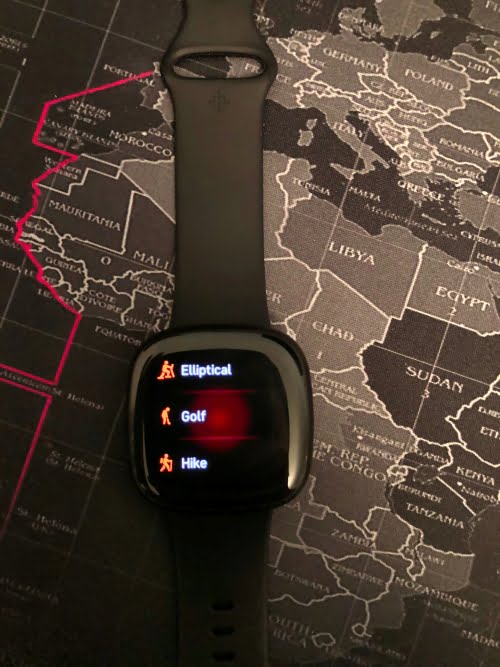

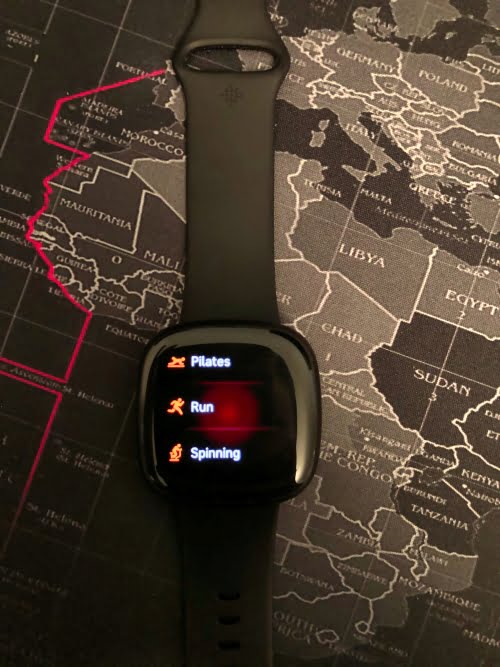
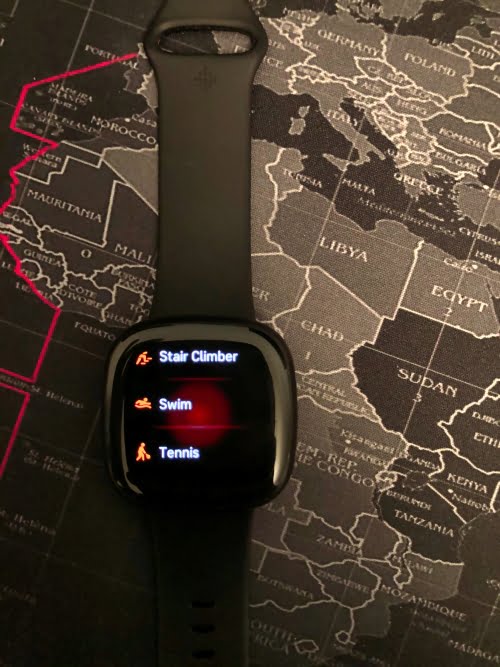

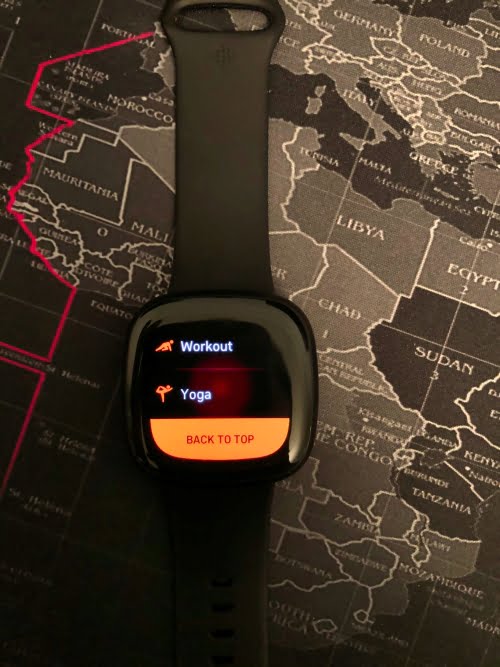
The GPS is surprisingly quick in most scenarios. I would recommend starting your workout outdoors for the quickest GPS locking. Once the Versa 3’s GPS signal is connected and the activity countdown culminates in telling you to “GO” it’s best you start to move at this point.
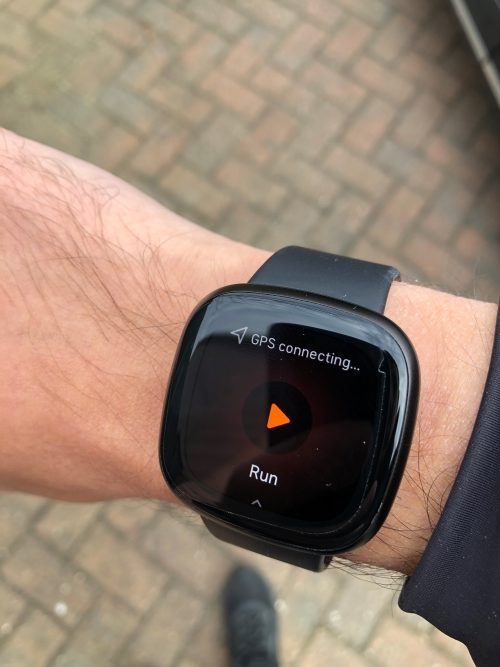
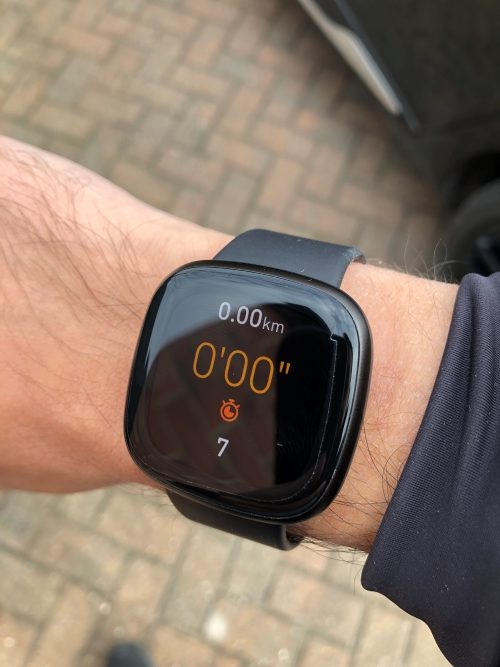
Whilst out running, trying not to collapse due to my serious lack of fitness, I was greeted with that vibrant display on the Versa 3 showing my current stats and trying to encourage me to endure more pain by picking up the pace.
Once you have finished your workout you can head over to the app and analyse your recent session. If you used GPS in your workout you can see it plotted on a map. You can then toggle between options to display your heart rate zones and pace over that map which is pretty cool.
Further down you can see the breakdown of your heart rate and calories burned throughout the workout so you can check if you have burnt enough calories to earn that mid-afternoon slice of cake that goes down too easily.

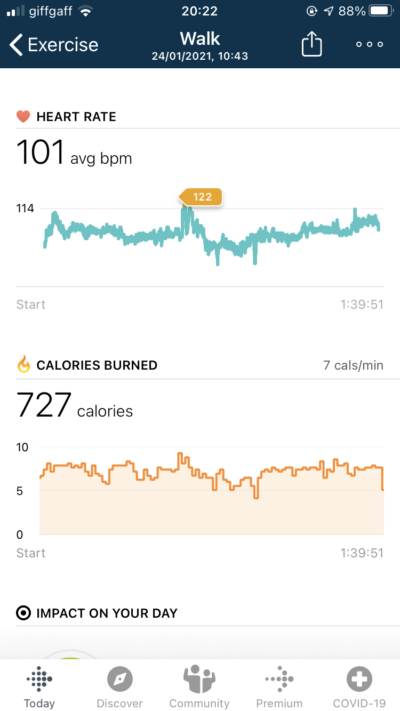
The Versa 3 also has an auto-detect feature where the watch identifies if you are doing something active and begins to track it. I have used this a handful of times when I haven’t started tracking manually and it has done a good job of recognizing that I have started some form of exercise.
As expected the Versa 3 delivers on the fitness tracking side of things. Fitbit has honed this aspect of their watches and you won’t be disappointed with it. It also features great social features like a huge social community and trophies and badges when you reach milestones and personal bests. If you need that social integration to motivate you to get going then Fitbit is excellent for that.

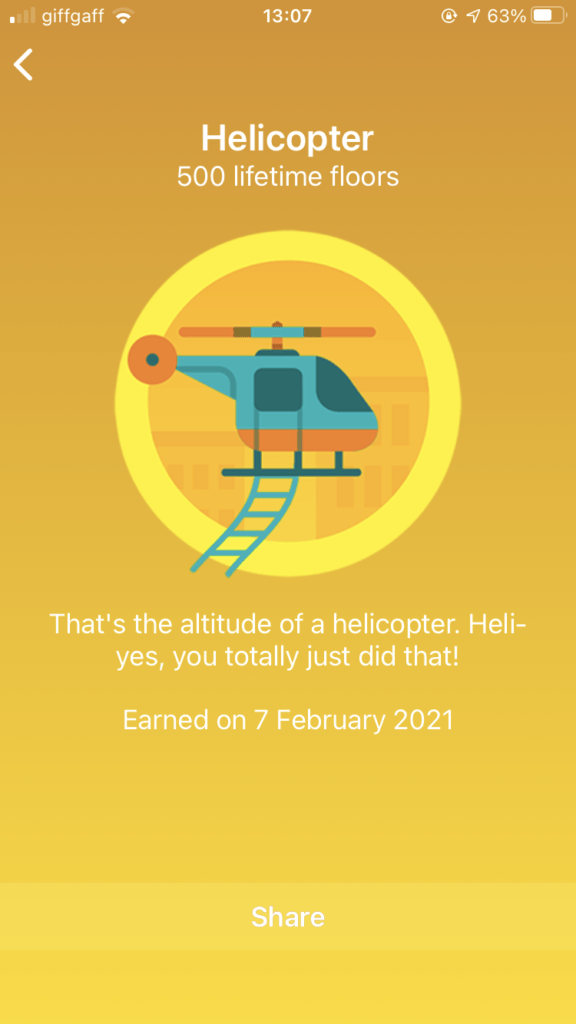
Sleep Tracking
The Versa 3 is the first Fitbit fitness tracker I have owned and sleep tracking was the feature I was really intrigued to test out. Fitbit wearables are regarded as some of the best sleep trackers available these days.
Sleep tracking is laid out in a really simple way in the Fitbit app. You can see your most recent sleep at the top and a sleep score next to it. The sleep score ranges between 0-100 but you should expect to see scores between 70-90 unless those all-night Call of Duty sessions are getting out of hand.
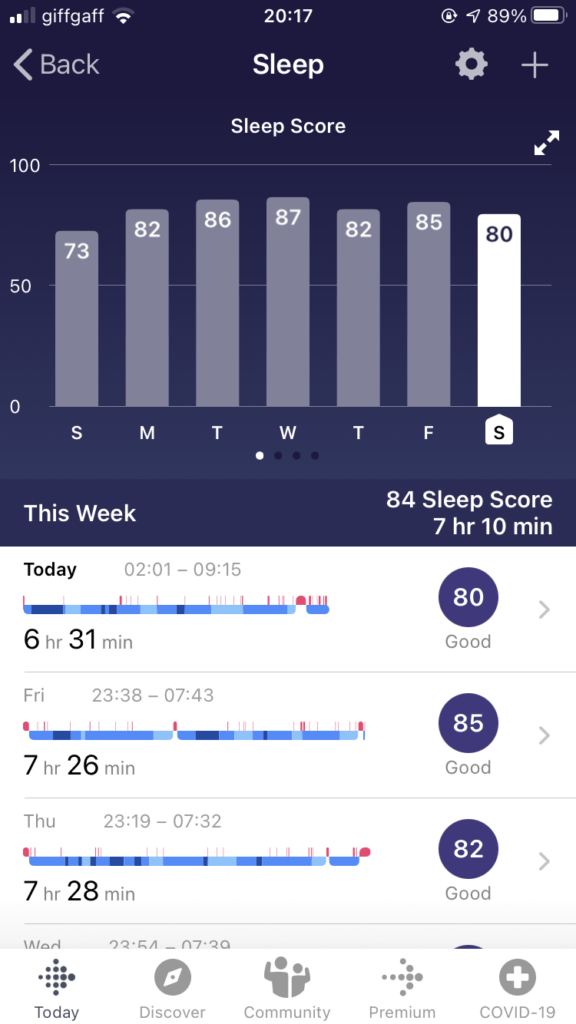
You go into a specific night’s sleep and see the breakdown of your sleep. The sleep stages are Awake, REM, Light & Deep. These sleep stages are plotted on a graph where you can highlight certain stages throughout the night and see their duration.

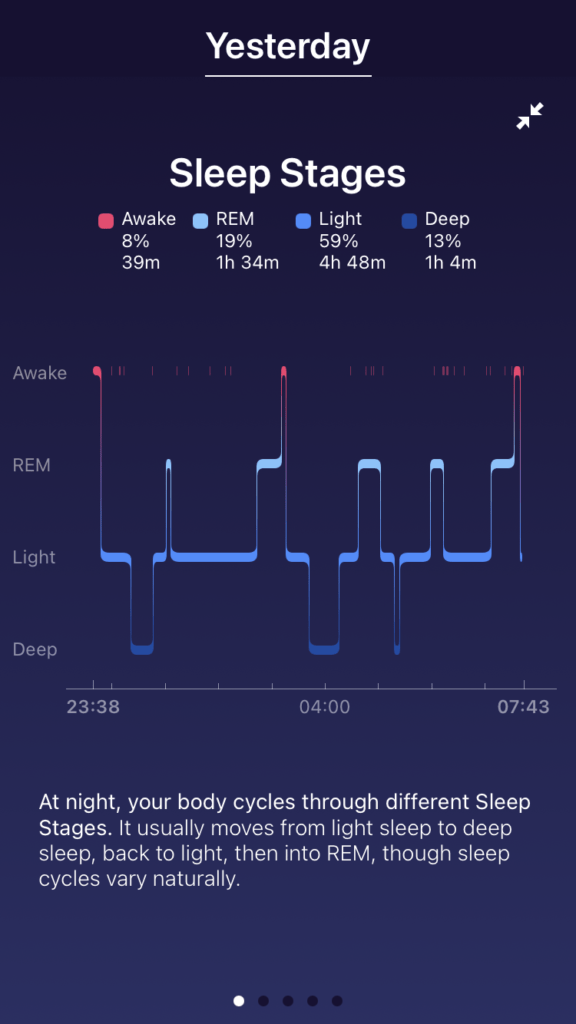
Alongside the sleep tracking, there is the SpO2 which measures how much oxygen your red blood cells are carrying. All very fancy stuff. However, it’s important to note that the SpO2 feature can only be activated during sleep and requires specific watch faces to track it. Hopefully, Fitbit will change this with a software update so it can be tracked on demand or at least with any watch face but only time will tell. You also get a weekly average for your nightly skin temperature, heart rate variability and breathing rate. All this is within the Health Metrics section.


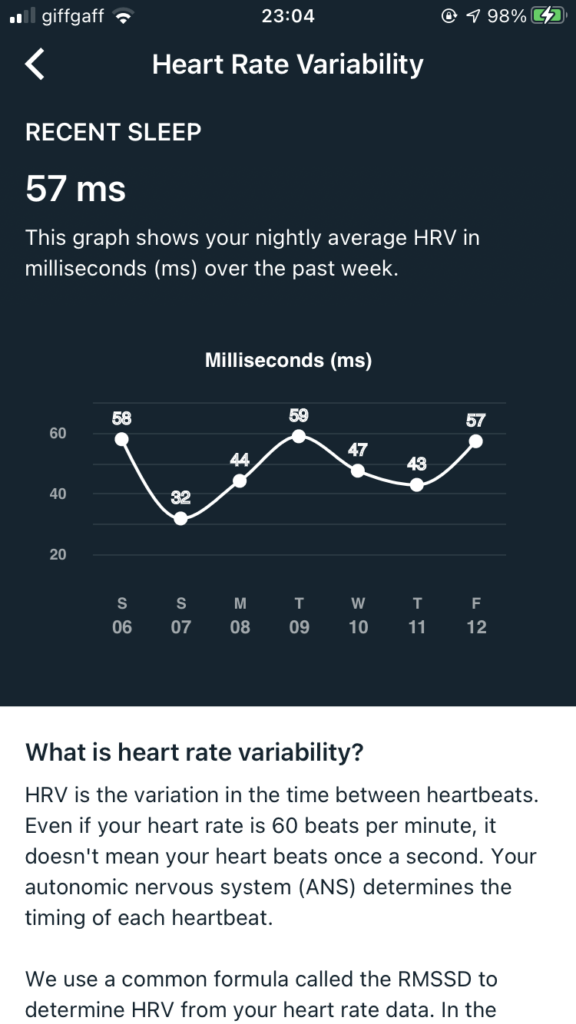
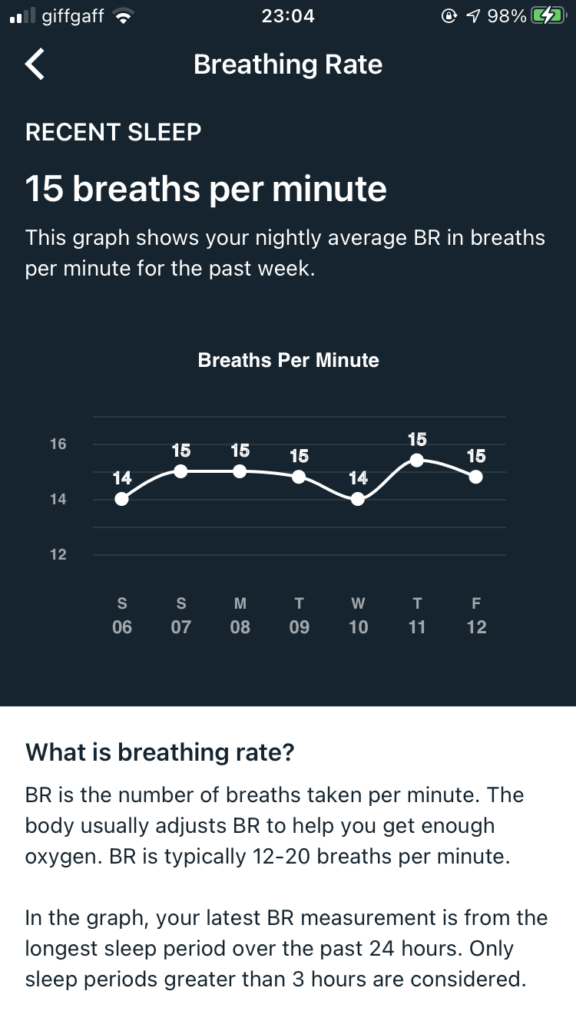
Don’t forget, to use this you need to use one of the SpO2 watch faces. The data from it could help confirm your fears that you do in fact snore, despite your best efforts to deny it. Fitbit claims in the app that typical SpO2 readings are above 90% but it’s not intended for medical purposes so don’t go telling your doctor that they have been wrong all along.
Needless to say, the hype around sleep tracking from Fitbit products does not disappoint. The data is so easy to interpret that anybody can analyse their sleep like a professional somnologist.
Battery Life
Battery life is always an important feature of a wearable device. There is nothing worse, in my opinion than having to constantly take off your watch to charge it. It can’t track anything on a charging stand. Fitbit claims the Versa 3 can squeeze out 6 days of battery life. Not bad when you compare it to some other wearables made by a fruit named company.
I would say the 6-day battery life claim is pretty accurate. Obviously long, GPS based workouts will drain that battery quicker than the first beer on a Saturday night but with normal day to day tracking you won’t see a drop that drastic. My usage has been reduced in this lockdown world we live in currently with an odd run during the week and a long walk at the weekend. Don’t worry if you are a workout warrior who loves tracking your activity via GPS, the Versa 3 comes with fast charging. Fitbit claims you can get 1 day of battery life from just 12 minutes of charge.
Whilst on the topic of charging, the charging cable Fitbit provides with the Versa 3 is short, really short (54cm to be precise). I know they say size doesn’t matter, but really Fitbit! This short cable can make changing the Versa 3 a pain if you don’t plan on plugging into a laptop. It’s also worth noting that Fitbit doesn’t sell a longer cable or even a dock for that matter. I think Fitbit has missed a trick here, as I would definitely have bought an official dock for the Versa 3. Despite this, there are a few third-party options on Amazon for both longer cables and docks. I bought a dock from Amazon for a reasonable price so I can now charge on my bedside table.
See my quick review of the KIMILAR Fitbit Versa 3 & Sense Charger Dock here.
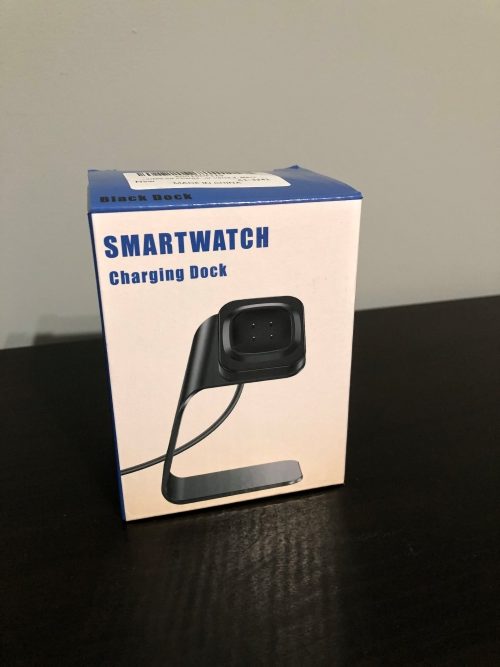
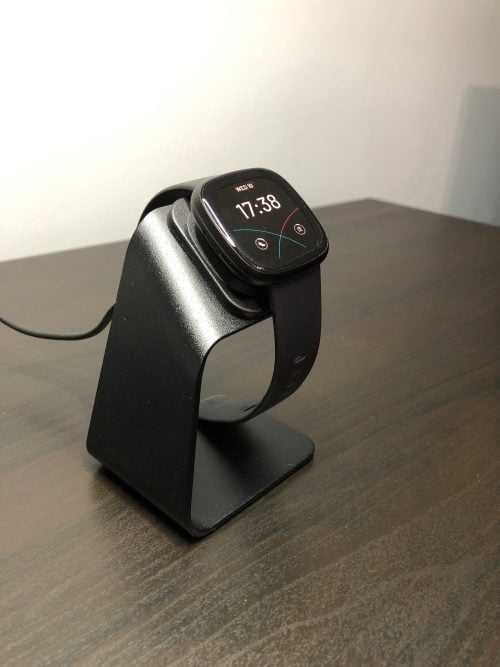
Just to make sure I wasn’t losing charging speed by using a third party dock I tested the charging time for both the official cable and the KIMILAR Fitbit Versa 3 Charger Dock to compare them. Both were charged in the same socket using the same plug to try and make the test as standardised as possible. The results below show that there isn’t much between the two with both averaging about 1.1% a minute so no worries using the dock to charge.
| Battery % Charged From | Time Taken to reach 100% | % Charged Per Minute | |
|---|---|---|---|
| Official Fitbit Charger | 38% | 54mins 30secs | 1.14% |
| KIMILAR Dock | 23% | 1hr 06mins 42secs | 1.15% |
Smartwatch features
The Versa 3 is pretty basic when it comes to smartwatch features. Don’t expect to be downloading lots of apps that allow you to do almost anything you want on your watch. You do get the basics like an alarm and timer/countdown feature. There is also a calendar app but this can only link into your phone manufacturer’s calendar so no support for Google Calendars and the like. Fitbit pay also features on the Versa 3 to enable you to pay using your watch but this is a feature I have never used as I feel a bit strange paying with my watch. Notifications are also pretty standard in fitness trackers and smartwatches these days and the Versa 3 is no different. You can’t get notifications for every app on your phone but most of the big hitters are there. When it comes to calls from your wrist it gets a bit odd. If you own an Android phone you can make use of the inbuilt speaker and microphone on the Versa 3. However, if you are invested in the Apple eco-system you won’t be able to look a bit nutty when you’re talking to your watch in public. If you like to have that feature in a wearable device then this may not be the one for you.
Smart integration with Alexa and Google Assistant is a mandatory feature for most devices in 2021. The Versa 3 delivers this, proving integration with both platforms. Google did come late to the party but it was there at the time I wrote this review. Having these smart apps built-in allows you to do a number of simple tasks hands-free or ask those burning questions like “how many sleeps until Christmas”. Don’t expect to be going all Batman with home automation from your wrist though as it just enables the basics.
Finally, on smart features, you do get inbuilt music apps from the likes of Spotify & Deezer which enable you to skip through the Best of Britney whilst you’re out jogging. However, unlike on the Versa 2, you cannot store music on the Versa 3 so if you like to go running without your phone and still listen to your favourite tunes this may be a deal-breaker for you.
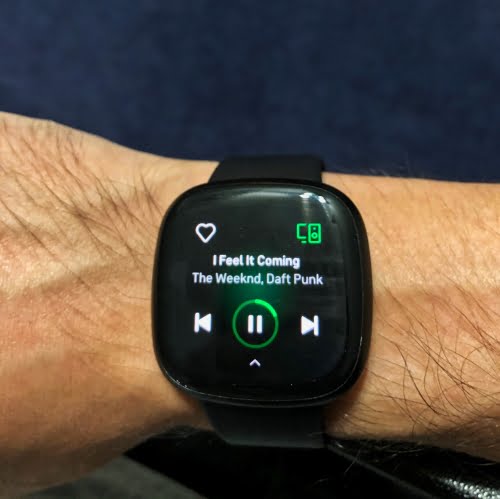
Final Thoughts
Overall my verdict on the Fitbit Versa 3 is positive. If like me and you are looking for a good, reliable fitness tracker that does the basics and a little bit extra well then you can’t go wrong with this watch. If you are really into your fitness and want the more advanced features then maybe the Fitbit Sense is a good option. Check out our comparison review of the Sense and Versa 3 here. Also, if you are looking for a full catalogue of apps to install on your watch then again I would probably look elsewhere in the market.
If you are looking to take the plunge and buy a Fitbit Versa 3 I would recommend you shop around to find the best deal. I’m a big fan of using TopCashBack for big tech purchases to get a bit of cashback on them. TopCashback offers varied levels of cashback across hundreds of merchants and are well worth a look to save some extra wonga. If you fancy joining them to make some savings you can use my referral link and you will get a £5 cashback bonus – https://www.topcashback.co.uk/ref/tomc260.
Let me know what you think of the Fitbit Versa 3 down in the comments below.
Thanks for reading this review. Until next time ![]()


